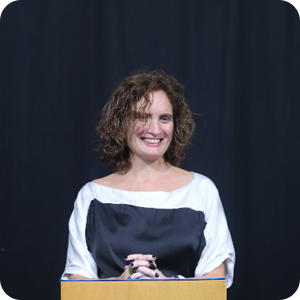Did you know that nearly 1.2 billion people or 16% of the global population are aged between 15 and 24? The youth age group is often characterized as having big dreams and ambitions and acting as agents of change in international development. Their ideas, energy, talent, cutting-edge skills, and passion for positive changes are the catalysts that help countries to grow and evolve. Yet, many still face challenges in terms of social or economic integration in some regions. As we mark International Youth Day today, let’s take a moment to reflect on the role of youth in advancing global development agendas, as well as the key barriers in this regard.
Key Takeaways:
- The theme of International Youth Day 2024 is “Transforming Food Systems: Youth Innovation for Human and Planetary Health” to emphasize the important role that young people play in addressing global issues.
- Nearly 90% of 1.2 billion young people today live in developing countries.
- Environmental justice is often claimed by young people who also are proven to have intense climate anxiety between the ages of 16 and 25.
- According to experts, youth bring fresh perspectives, innovation, and a boost of energy to global development, addressing issues such as climate change, poverty, and social inequality.
- However, approximately 70 million young people are unemployed worldwide. Moreover, in the developing world, nearly one-third of youth are illiterate.
- Limited access to quality education, high unemployment rates, and a lack of representation in decision-making processes are key barriers to youth involvement and development.
DevelopmentAid: What is the role of youth in advancing the global development agenda?

“Youth are at the forefront of advancing the global development agenda, bringing fresh perspectives, innovation, and energy to the most pressing issues of our time. Their involvement is critical in tackling challenges such as climate change, poverty, and social inequality. By leveraging their unique insights and creative solutions, youth can drive sustainable progress and create a more inclusive world. Intergenerational partnerships play a vital role in this process.”

“The voices of youth are needed in order not to miss a holistic view on current events. Environmental justice is often claimed by young people, who also are proven to have intense climate anxiety between the ages of 16 and 25. As a result, we witness phenomena such as Greta Thunberg and Fridays for Future, where a considerable part of the youth wants to act for the planet and their future. The need for change to survive has brought various innovative ideas from young people in the field of sustainability, such as the identification of banana waste as one of the potential sources of renewable energy which is supported by Youth Environment Living Labs. Despite the complexity of this issue, youth have the potential to offer vital and innovative solutions that can benefit all populations. When major institutions and organizations provide the necessary support and place their trust in young people, these solutions can be effectively developed and implemented.”
DevelopmentAid: What role can intergenerational partnerships play in fostering collaboration and knowledge exchange between experienced professionals and youth activists?

“By fostering collaboration and knowledge exchange between experienced professionals and youth activists, these partnerships can bridge the gap between traditional approaches and new, dynamic ideas. Mentorship from seasoned professionals provides youth with the guidance and support they need to navigate complex development landscapes, while young people inject vitality and fresh viewpoints into established practices. This synergy can lead to more innovative and effective development outcomes.”

“Intergenerational partnerships hold immense potential in fostering collaboration and knowledge exchange between experienced professionals and youth activists. This collaboration can lead to innovative solutions and a more comprehensive understanding of the issues, contributing significantly to international development. Experience is the best handout so, when an experienced person in international development mentors the youth, there is an intercourse of knowledge that the youth can benefit from. I was once called upon to facilitate a seminar on leadership and business for marginalized girls fleeing the north of Ghana so as not to be forced into child marriage. I spoke to a group of 350 young ladies and, a year later, I was called upon again. One participant said she could start her own catering service using the insights she gained from the seminar I had facilitated the previous year. The question is, are experienced professionals ready to mentor youth activists, and are youth activists willing to learn? Just as one group needs to be willing to mentor and coach, the other group should also be ready to be mentored and coached. Organizations involved in international development should sensitize the communities they are involved in to create mentor-a-youth programs so that experienced professionals can be given the opportunity to mentor a particular youth over some time as part of the NGO activity in that community.”
DevelopmentAid: What are the key barriers that prevent young people from fully participating in international development work, and how can these barriers be addressed?

“Several barriers prevent youth from fully participating in international development work. Key challenges include limited access to quality education, high unemployment rates, and a lack of representation in decision-making processes. To address these barriers, it is essential to implement policies that enhance educational opportunities, create pathways to employment, and ensure youth voices are included in policy discussions. Providing platforms for youth to engage in dialogue and decision-making is crucial for their empowerment and active participation. International development initiatives must also prioritize the needs of youth in marginalized communities. Tailoring programs to address the specific challenges faced by these young people is essential. This includes ensuring access to resources, education, and opportunities for economic empowerment. By focusing on inclusivity and equity, development initiatives can harness the full potential of youth, particularly those from underserved backgrounds.”

“International development is a concept that involves a holistic approach to the development of individuals regardless of where they live and work. It encompasses strategies to improve individuals’ lives in areas of need and interest. It includes social, economic, health, and education, as well as other aspects that impact the development of society. Every community is sustained by youth-driven activities because, in most communities, the youth are the majority. To have them involved in community development, which in the long run facilitates international development, is crucial to them gaining insights into global development and becoming involved. So, what critical barriers urgently need to be overcome to enable the youth to participate fully in international development work? Firstly, the youth, especially those in rural areas, are often not included in community activities that are geared towards entrepreneurship and leadership as their urban counterparts are. Secondly, the youth in rural areas do not have access to good educational facilities. Most are learning in dilapidated buildings or even under trees. In addition, most of them only have primary school level, not secondary or tertiary level education. They also migrate to the urban centers in pursuit of greener pastures, which drains the youth population in rural areas and overpopulates the metropolitan areas. And, because these youth come to the cities with no skill set or education, they become involved in social problems such as armed robbery, smoking, or being porter boys or girls in the market. To address the barriers, one must look at the root of the problem. Education is the wheel of development for any country, and education is not only within the four corners of the school but is both formal and informal. Education is from the womb to the tomb, so efforts should be made to trigger a hunger for knowledge in the youth right from the community through community engagement, taking part in decision-making, and not allowing culture bias that says that when the elders are speaking children are not to speak but rather allow the youth to take part in discussions and deliberations.”
DevelopmentAid: How can international development initiatives better prioritize and address the needs of youth populations in marginalized communities?

“Empowering youth is key to advancing global development agendas. Through intergenerational partnerships and targeted support, we can break down barriers and create a more inclusive and sustainable future where young people are not only participants but leaders in driving global progress.”
See also: International Youth Day: Challenges, impact and perspectives | Experts’ Opinions
For young people, it can sometimes be challenging to enter the international development job market due to a lack of experience. However, there are still plenty of positions for beginners that will help young specialists to strengthen their skills and gain more expertise in the field. On the DevelopmentAid platform, there are over 5,000 job opportunities which require less than 5 years of experience. These can be accessed with the Individual Professional Membership package which also offers the chance to search for tenders or grants for individuals, contact over 300,000 organizations in the international development sector, and much more.

